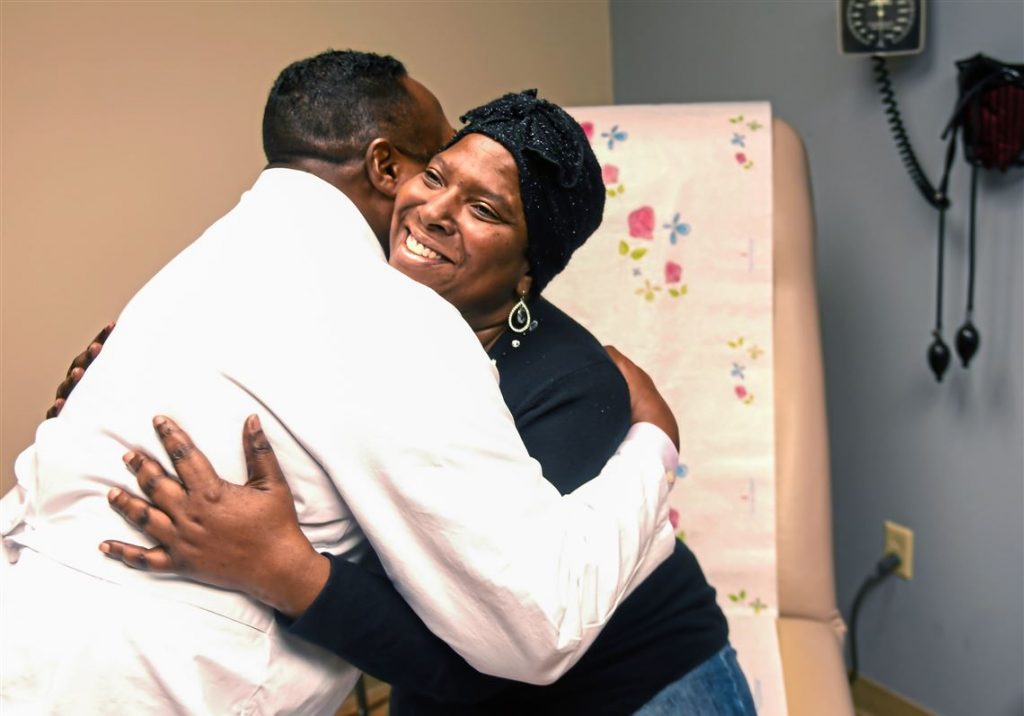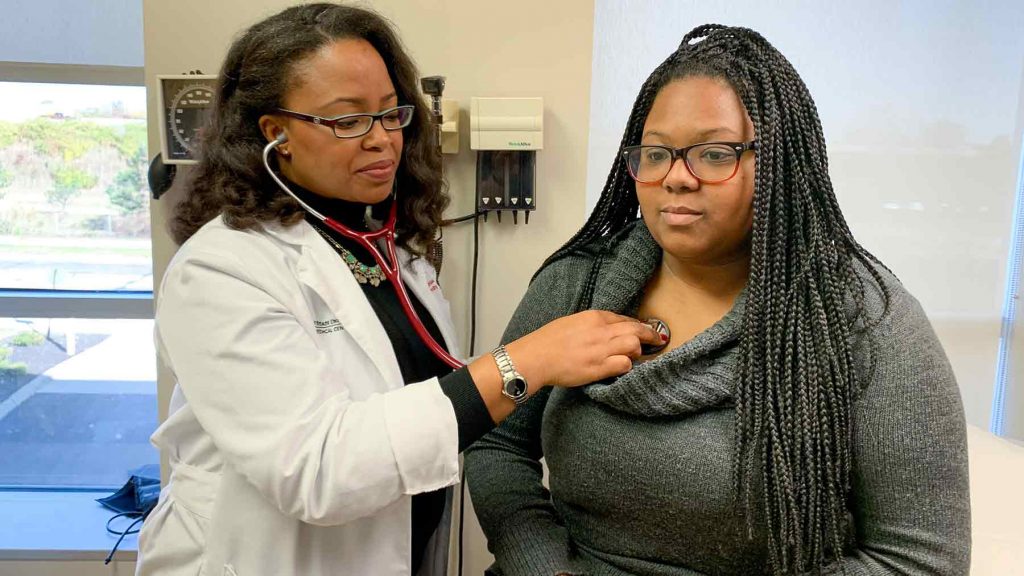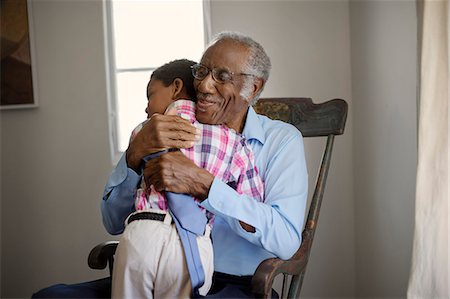What are the treatment options?
extended version
In general, there is not a fixed guideline for the treatment of pancreatic cancer. There are many options for treatment plans, and none of these options are necessarily better than the other. Because the types and extent of pancreatic cancer vary by person, treatments are usually tailored to each patient. In this section, we will discuss the different types of treatments for pancreatic cancer. It is important to remember that if you are eligible for surgery, this option may represent your best chance at a cure, and also generally tends to offer longer duration times for survival.
Surgery
Surgery to remove cancer of the pancreas is only offered to patients with tumors that are in one area (localized) and that do not have too much connection to major blood vessels. About 15-20% of patients with tumors in the pancreas are able to have them removed (resected) with surgery. For these patients, surgery gives the best chance for their cancer to be cured and usually improves their condition. Since surgery can be an effective treatment option, a great deal of importance is put on testing to identify which patients are eligible for surgery.
Before being offered surgery, patients will typically go through tests to make sure that surgery is a good option for them. Once a patient is cleared for surgery and is in the operating room, the surgeon will check to see if the cancer is similar to what they saw in the pre-operative tests. In some cases, the cancer may have spread further than the pre-operative tests showed. If this happens, the surgeon will typically not operate to remove the cancer. Other surgical options may be given to focus on managing the symptoms of pancreatic cancer.
The surgery that is most often used to remove (resect) cancer in or near the head of the pancreas is the Whipple procedure. This is a complicated surgery that has many variations. The most common procedure involves removing the tumor and aspects of the pancreas and re-directing the digestive tube around this area. Researchers and surgeons continue to discuss how much tissue should be taken out in order to get the best chance of survival and possibly decrease the side effects of the surgery. There is not overall agreement on this topic yet, and preferences for this procedure may vary between medical professionals.
The Whipple procedure is a long and difficult task for the surgical team; it can take several hours of operating time. The pancreas is an organ that is complex and has a lot of different connections and blood vessels. Also, the layout of these structures and blood vessels can vary from person to person. Despite these factors, the Whipple procedure has become safer over the past decades. The mortality rate has decreased over time and is now generally 2-3%, although some facilities in the U.S. have reported rates as low as 1%.
While this surgery can be effective, it also can have side effects and complications. Because the Whipple procedure is complicated, surgeons who perform this surgery more frequently tend to have the best outcomes.
If the surgeon decides that a patient is not eligible for resection (removal) of cancer of the pancreas, other surgeries may be offered that reduce the symptoms of pancreatic cancer. Usually, these surgeries target the most common symptoms of pancreatic cancer or the cause of these symptoms. These include pain, obstruction of the small intestine, and jaundice due the blockage of the bile duct. Procedures that may be done to relieve these symptoms are a nerve block of the celiac nerve plexus for pain, intestinal bypass surgery, or bile duct bypass surgery. A stent (tube that provides support) might be placed to keep the bile duct open.
Surgery can be combined with other forms of medical treatment to improve the outcomes of surgery. The practice of giving medical treatments like chemotherapy or radiotherapy after surgery is called adjuvant therapy. Some recent studies have shown that adjuvant chemotherapy agents (e.g., FOLFIRINOX or others) can improve the length of survival time in patients who have surgery to remove pancreatic cancer.
An important type of treatment that is sometimes done before surgery is called neoadjuvant therapy. This type of treatment involves giving chemotherapy or chemoradiation prior to possible surgery. Some studies have shown that neoadjuvant therapy given before surgery can render cancer that was previously not thought to be resectable to then become resectable, allowing for more patients to be eligible for surgery. About 20% of patients with pancreatic cancer deemed inoperable have tumors that respond to neoadjuvant therapy.
Medical Treatment
There are multiple options for treatment of pancreatic cancer that can’t be removed using surgery or has reappeared after surgery. However, there are no guidelines that are universally agreed upon. Part of the reason why there are only general recommendations is because medical treatment is usually tailored to each individual, and everyone’s situation is unique.
In this section, we will discuss the general standard medical treatments used in pancreatic cancer.
Treatment for Locally Advanced Pancreatic Cancer
Since locally advanced pancreatic cancer is generally not removable with surgery when it is diagnosed, the initial treatment is usually chemotherapy. Chemoradiation (chemotherapy plus radiation) used to be considered the standard treatment, but recent studies have made the role of radiation unclear.
There are many studies that have attempted to find the best mode of delivery and amount of radiation to the area of the pancreas with a tumor. These methods include radiation that is carefully provided externally to a defined field of the body, radiation that is administered during surgery, and the direct application of radiation to the tumor. Radiation can be given along with chemotherapy agents, like gemcitabine and capecitabine.
According to current guidelines, chemotherapy (with or without radiation) can be used to shrink a tumor enough to allow some patients who are diagnosed with locally advanced pancreatic cancer to be eligible for surgery. However, this treatment only works well enough to allow for surgery in a relatively small percentage of patients.
Treatment for Advanced/Metastatic Pancreatic Cancer
In patients with advanced or metastatic pancreatic cancer, the cancer has spread from the pancreas to other parts of the body, or has encased one or more major blood vessels. When the cancer becomes more widespread, the advantages of the radiation are reduced. For this reason, treatment for advanced pancreatic cancer usually includes chemotherapy agents alone, or uses more novel approaches.
There are multiple chemotherapy agents that are used in medical treatments for pancreatic cancer. A chemotherapy agent that has been used for more than 40 years as a treatment for pancreatic cancer is 5-FU (fluorouracil). 5-FU disrupts the formation of an essential building block for DNA replication. This interferes with the normal cell cycle and usually results in the cells dying. Cancer cells are particularly prone to being affected by these chemotherapy agents because of their uncontrolled growth. Since cancer cells grow so quickly, tumors tend to be selectively inherently unstable and vulnerable to chemo drugs. Chemotherapy agents hurt the ability of all cells to go through their normal cycles of growth, but it particularly affects cancer cells due to the environment of their rapid and chaotic growth.
Gemcitabine is a drug agent that tends to increase the medial survival duration and survival rates for patients with pancreatic cancer when compared to 5-FU alone. In individual cases, gemcitabine also seems to improve quality-of-life measures over treatment with 5-FU or no medical treatment at all. The targeted therapy Tarceva has been approved in the U.S. to treat pancreatic cancer, although the minimal survival benefit has led to selective usage. More recently, medical treatments with four and five different drugs in combination (often led by 5-FU or gemcitabine) have given comparable or even better results than gemcitabine alone. However, these combination chemo treatments tend to produce more side effects. An example of this type of treatment is FOLFIRINOX, which contains leucovorin, fluorouracil (5-FU), irinotecan, and oxaliplatin. A recent study found that the mean survival time for patients with untreated metastatic pancreatic cancer was better with FOLFIRINOX treatment than gemcitabine alone.
There appears to be some interesting and potentially promising combinations of two or more conventional drugs agents that can be used to treat advanced pancreatic cancer. This includes combinations of standard treatments paired with newer experimental or more targeted agents. An example of this is pairing Abraxane with gemcitabine, which was found to be more effective than gemcitabine alone in patients with metastatic pancreatic cancer. Because of this success, the treatment is now approved by the U.S. Food and Drug Administration (“FDA”).
Currently, initial treatment of advanced pancreatic cancer usually includes the combination of gemcitabine plus Abraxane OR a version of the FOLFIRINOX regimen. Studies have shown that these combinations tend to lead to longer duration of survival than the chemotherapy agents on their own.
There are also new treatments being developed that target specific hereditary variations of pancreatic cancer as identified by genetic testing; this may be true of up to 15% of those newly diagnosed with cancer of the pancreas. In a 2019 study, a drug called Olaparib was given as a maintenance treatment in advanced pancreatic cancer patients who demonstrated a hereditary BRCA1/2 genetic variation. This drug was administered after the patients received initial platinum-based chemotherapy. Olaparib was approved by the FDA because in those patients it slows progression of the cancer and increases survival time.
In addition to chemotherapy and novel targeted therapy, there has been much recent research into so-called biologic therapy, which often involves trying to harness the immune system of the patient to fight the cancer from within. One such drug, for example, is Keytruda (pembrolizumab) which acts both as a targeted and biologic therapy. If the advanced pancreatic cancer patient shows the PD-L1 protein and the patient is no longer eligible for surgery, then Keytruda can be given. It tends to boosts the body’s own immune response and has been shown to reduce the size of tumors. This is available only to a small number of such patients and it is early days for biologic therapy, but the promise for the future is there.
In summary, medical treatment is individualized for patients with advanced pancreatic cancer. Medical treatment plans tend to be tailored for each individual patient to help optimize results.
Supportive (palliative) care is usually offered to patients with serious illnesses. It is focused on comfort and providing relief from symptoms such as pain. Supportive care can guide you and your family through decision making to choose treatments that align with your beliefs and are best for your situation. Usually, a complete supportive care team is made up of you, your family, and health care professionals.
Supportive care is very important for people who have cancer. Cancer of the pancreas is one of the more aggressive forms of cancer and can cause uncomfortable symptoms. The side effects of medical treatments like surgery and chemotherapy can also be bothersome and decrease quality of life. While these symptoms and side effects tend to be common, there are steps that can be taken to make patients more comfortable.
Studies have shown that African American patients are less likely to receive palliative care. We want to stress that all patients with pancreatic cancer are eligible to receive this type of care. This topic is discussed in greater detail in a later section.
Ideally, supportive care providers should be brought in after a patient is diagnosed. When deciding between treatment options, supportive care specialists can discuss the benefits and drawbacks of them.
Supportive (palliative) care focuses on relieving symptoms associated with pancreatic cancer, as well as treatments for cancer. Examples of these are the procedures mentioned earlier in the section about surgery. Some procedures can be done to relieve symptoms of pancreatic cancer, like pain and jaundice. For example, a stent can be placed in the bile duct or small intestine to relieve symptoms due to compression or obstruction of these structures. Specialists can also prescribe medication for common side effects of chemotherapy such as nausea.
One of the main fears and concerns associated with pancreatic cancer is pain. Pain can be managed – and often well managed. If not dealt with adequately, pain can cause significantly negative effects on physical and mental health. Medications can help with pain management. For those who want to avoid opioids, there are other medications, and other options such as nerve blocks and epidural blocks. These procedures are placed to keep pain signals from reaching the brain. Other pain management methods include alternative treatments like acupuncture, massage, biofeedback, relaxation, visualization techniques, and hypnotherapy.
Supportive care also addresses a patient’s emotional and mental health. Getting help from a mental health care professional (such as a physiatrist or psychologist) may help patients reduce their levels of stress, anxiety, and depression. Maintaining hope and a positive outlook on life may help patients stay strong during treatment and improve their quality of life. In fact, research has shown that factors like these play a significant role in a patient’s perception of their quality of life.
Nutrition
High-quality nutrition is important during cancer treatment. And being underweight or overweight can make it harder for your body to handle treatment like chemotherapy.
When patients go through cancer treatment, it is common for them to lose weight and appetite. Treatment can make people feel nauseous or tired. Not eating enough can make patients weak and even can lead to malnourishment. Pancreatic cancer itself can lead to severe weight loss. Registered dietitians and physicians can work together to create a regimen for dietary support and supplementation of pancreas enzymes, which may aid with digestion, weight control and a better sense of well-being.
Exercise
Research has shown that exercise is a great way to support your physical and mental health during cancer treatment. Regular exercise can have many benefits like reducing treatment side effects from treatment, lowering anxiety or depression and improving sleep.
Since a side effect of cancer treatment is feeling tired, exercise can be hard at times. Examples of types of physical activity that are lower intensity are walking, stretching, body weight exercises, and certain types of yoga. It is important to talk to a medical health professional before starting regular exercise to explore what types of exercise are best for you.
Support groups
Living with cancer can be difficult, even if you have family and friends to support you. Cancer support groups are a great resource for people that have pancreatic cancer, because members of these support groups all share the common experience of dealing with cancer. There is some evidence that joining a support group can improve rates of cancer survival, as well as the quality of life. Joining a group can help you feel less alone and may improve your overall mood and outlook.
There are a lot of options for the types of support groups you can join. Support groups can be in person, online, or even through the phone. They can also be specific or broad. There are support groups for all people that have cancer, but there are also options for people that would prefer to be in a support group with others that they identify with. For example, there are support groups for specific cancers, as well as for specific ethnicities and gender identities.
To find the best support group for you, ask your local hospital or cancer center about what groups are available. You can also ask other cancer patients if they are part of a support group and what their experience has been like. Support groups are not always a good fit for everyone, so it may help to consider if you would benefit from this before looking for a group.
Spiritual Support
Spirituality and spiritual care can be an essential aspect of coping with a cancer diagnosis, dealing with the side effects of treatment, and improving quality of life. The feeling of being part of something greater or having meaning in one’s life can help patients find peace and a sense of wellness while experiencing cancer-related symptoms. Some studies have shown that spiritual well-being in cancer patients is linked to lower levels of depression, better quality of life, and higher levels of hope and positivity.
Spirituality is not necessarily tied to religion. Anyone can practice spirituality, whether it is through meditation, visualization, or other methods. For patients who are religious, it might be worth considering including a chaplain or spiritual guide as a member of your healthcare team. Many hospitals have chaplains whose services can be requested.
If you have strong ties to a certain religious institution or organization, it may be worth asking if they have support groups for cancer. Many churches and religious institutions have focus groups for people with cancer. These can give you a place to connect with others who live by the same principles and beliefs as you do and provide you with emotional support throughout your treatment.
Clinical Trials
Clinical trials are offered all over the world to test new and possibly improved treatment options. These trials are part of a system that involves many experiments based on science in which a new medical treatment leads to approval (or not). In the U.S., this process is overseen by the FDA.
The process of approving a drug through the FDA is long and can take up to 15 years. Before any substance is tested in humans, it has to show successful results in animals. After it has been proved to be safe and effective in animals, testing on humans through clinical trials can begin. Clinical trials on humans have three phases. These phases test multiple factors: if the drug is safe on humans, if it has an effect on the medical condition being studied, how much is needed to treat the condition, and if it is more effective than the current treatments. If the medication passes these trials, it is usually approved by the FDA. After being approved, patients are monitored for potential side-effects.
The decision to participate in a clinical trial is a big one and should not be taken lightly. Clinical trials are experiments. There is no guarantee that the drug being tested will work. The drug may also cause unexpected side-effects. Some clinical trials require patients to stop medical treatment for 28 days before starting. This may not be a problem for patients with other diseases, but it might be for patients with pancreatic cancer because it is a disease that progresses quickly.
On the other hand, standard treatments may not help much at certain stages of pancreatic cancer. Some of the new treatments may be more promising than current treatments. In these cases, making the informed decision to be part of a clinical trial might be a good choice.
The decision to be part of a clinical trial is not one that you need to make alone. You can ask for help and guidance from your doctor. With a medical health professional, you can discuss important questions like “Am I a good candidate for the trial?” and “Is the clinical trial actually more promising than existing treatments?”. The advice you get from your doctor and other health professionals can help give you the information you need to make the decision that is best for you.
Complementary and Holistic Treatments
Based on people’s personal experiences, we have heard positive feedback with the treatment of symptoms related to pancreatic cancer (and chemotherapy) involving holistic approaches such as visualization techniques, meditation, prayer, acupuncture, massage, biofeedback, relaxation therapy, hypnotherapy acupuncture, green tea and Chinese herbs. While these holistic approaches can be helpful for dealing with symptoms, we suggest that these approaches are used along with medical treatment, not used to replace medical treatment.
We are not against complementary or holistic treatments that have little to no side effects and don’t interfere with conventional medical therapies. These holistic methods may provide benefits like supporting faith and hope in one’s recovery, which can be powerful tools. However, we would advise being careful when trusting claims about alternative and holistic treatments. If you are considering using an alternative or holistic treatment, we suggest that you speak with your doctor about it. They may be able to give you information on if this would interfere with any medical treatment that has been prescribed to you. We understand that not everyone is comfortable speaking to health professionals about these holistic approaches, so our advice is to be careful and thoughtful if you plan to use alternative methods.
Some clinical trials involve the use of alternative or holistic therapies to fight pancreatic cancer. There is a divide between researchers that support these treatments and those who don’t. These experiments may provide evidence that some non-medical therapies can improve outcomes for patients with pancreatic cancer, but only time can tell us what the results will be. Like any other clinical trial, we advise being careful when deciding to participate.
Extended Version
Categories






Written by: Jasmine Mitchell, University of California Santa Barbara
Edited by: Dale O’Brien, MD, Cancer Patients Alliance
Formatting and content by: Raewyn O’Haire, AB, Cancer Patients Alliance
Consultant: Neil Atam, University of California Santa Barbara
Top Reference
Pancreatic resection: a key component to reducing racial disparities in pancreatic adenocarcinoma
Click Here
Click Here for the ACS Journal article